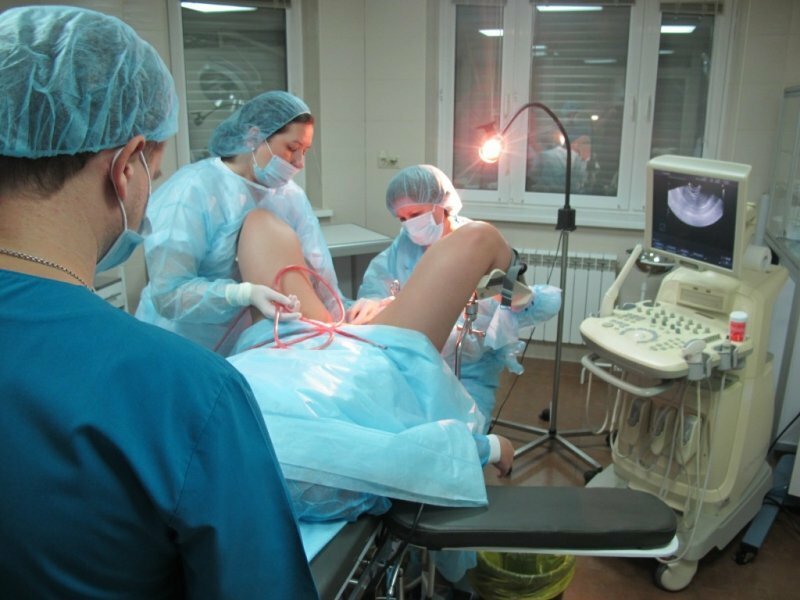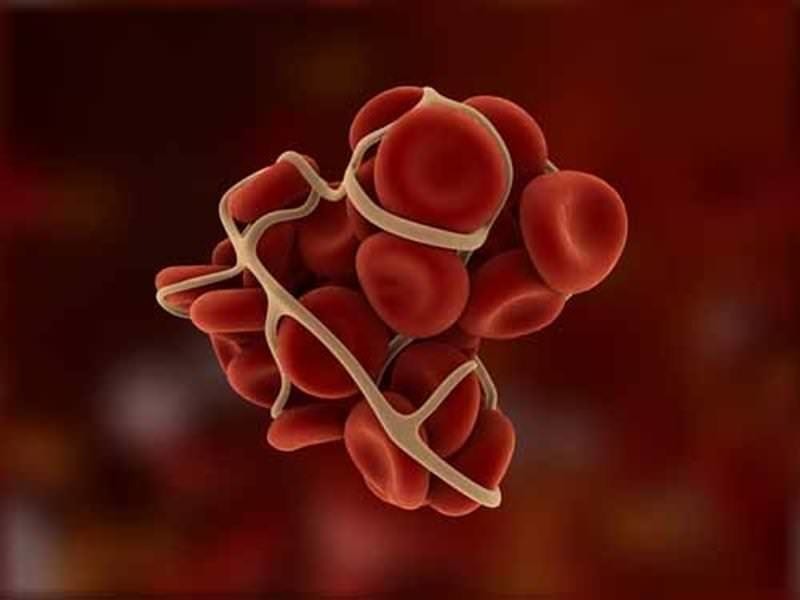The postpartum period is a difficult time in a woman's life, which is marred by prolonged discharge from the vagina. Which secretions are considered physiological and that indicates the need to consult a doctor - read this article.
Contents of
- Why does the discharge occur after delivery?
- What kind of discharge goes after childbirth?
- When does the discharge end after giving birth?
- What is the purulent discharge after childbirth?
- Video: Purulent discharge from the vagina
- Why does the yellow discharge occur after delivery?
- Causes of greenish discharge after delivery
- Discharge after birth with odor
- Why is there little discharge after delivery?
- Can there be discharge from the chest after giving birth?
- How to prevent serious complications during postpartum discharge?
- Video: Lochia after childbirth. What do the doctor's say?
Loechia is a specific vaginal discharge after delivery which is an natural process of and consists of blood, mucus and endometrium. Such discharges suggest the reverse development of the uterus, its contraction and return to the
prenatal state.Why does the discharge occur after delivery?
During pregnancy the uterus grows , its functions and appearance change. When the difficult and important moment of childbirth is left behind, its "mission" is fulfilled and this organ returns to its usual state, gradually cutting and decreasing .However, during these reductions, the remains of , fetal membranes and mucus are expelled from the uterine cavity.
 Immediately after childbirth begins profuse bleeding
Immediately after childbirth begins profuse bleeding In addition, at the place where the placenta was attached to the uterus, the remains open bleeding wound , which gradually heals. Until the complete healing of the wound surface and the return of the uterus to the prenatal state, and the lochia continue.
What kind of discharge goes after childbirth?
In the first hours after delivery, vaginal discharge has bright red color, , which is due to slight bleeding due to physiological damage in the uterus and birth canal during delivery. Several consecutive days, these bleedings can be absolutely unchanged , in bloody discharge there may be small clots.
After the of the first week of , postpartum discharges can change their intensity to .In addition to bloody discharge, mucus is increasingly blended from the cervical canal, so that the hue of the discharge will become slightly lighter and they will not resemble bleeding.
As a rule, the departure of of large clots of at this stage is not the norm and it is better to talk about this with a gynecologist.
 Large clot
Large clot In the future, the woman giving birth will note that the discharge becomes less : first they will resemble monthly ones, later they will change their shade to brown , they will switch to smear. Through , two to three weeks of lochia can become of a yellowish shade( but not purulent!), Then white, and soon transparent mucus will exit the vagina, indicating the end of the involution of the uterus.
When does the discharge end after giving birth?
The duration of the postpartum excretions of is individual for each woman. Typically, experts say the average duration of such emissions, making 40 days , but this figure is far from everyone corresponds to reality.
 Allocations during the first weeks can bring discomfort to
Allocations during the first weeks can bring discomfort to A variation of the norm is the duration of the excreta that is from 30 days to two months of .There are cases of a two-week duration of lousy, but these are rather small exceptions to the rule. Most women talk about the figure 30-40 days , arguing that during this time, any discharge from the vagina has completely stopped.
What is the purulent discharge after childbirth?
- It is very important to monitor the color and the odor of that have discharge after delivery. Since the uterine cavity is a wound and the secretions are an excellent medium for the propagation of bacteria and infections, , there is a huge risk of infection with
- . If this occurs, the secretions will definitely tell about this unpleasant odor and the presence of purulent impurities
- About the inflammation in the uterus, along with purulent discharge, will indicate temperature rise .It is important not to confuse it with the process of becoming lactation, when a slight increase in temperature is considered physiological
- . If you suspect infection of the endometrium, , you should immediately seek the help of a specialist, because in the early stages it can talk about remains of the fetal membranes inuterine cavity and the need to clean
Video: Purulent discharge from the vagina
Why does the yellow discharge occur after delivery?
Approximately through 10-14 days after delivery of the discharge become a yellowish hue. To be frightened of it it is not necessary is a normal process of restoration of a uterus .Such emissions only indicate that involution of occurs naturally and naturally.
But if such discharge begins in the first week of after delivery or at the right time, but resembles pus , then it is necessary to consult a doctor. This may indicate a purulent process that can begin for such reasons:
- lack of proper hygiene
- remains of membranes in the uterus
- presence of blood clots that partially or completely block the outflow of lochia
 Strictly observe the hygiene of the genitals
Strictly observe the hygiene of the genitals After delivery it is important to carefully monitorfor hygiene of the genitals , which consists in the following actions:
- after each visit to the toilet it is necessary to wash out
- the gasket should not andUse for longer than 4 hours
- should not use tampons and caps to collect secretions - the lochia should flow freely out of the vagina in order not to be the active growth environment of the pathogenic microflora
- until the completion of the lousy and the gynecologist's examination of sexual contacts should be avoided
Fulfilling these rules will caution the severe consequences: infection and purulent processes.
Causes of greenish discharge after birth
The appearance of greenish excretions from the vagina that are not characteristic for the recovery period , indicates the presence of a serious disease - of the endometritis .Its cause is bacterial infection of the uterine surface, which could be caused by by the poor contractility of the of this organ. This, in turn, leads to the fact that the lochia accumulate in the uterine cavity and the inflammatory process begins, flowing into the purulent .
 Greenish discharge cause to seek medical attention
Greenish discharge cause to seek medical attention Endometritis is also accompanied by additional symptoms:
- with
- fever with lower abdominal pain
- with weakness and discomfort of
- with an unpleasant odor from the vagina and discharge
Treatment of endometritis should include antibacterial therapy of , and its inopportunity can lead to infertility orsepsis and, as a consequence, lethal outcome.
Discharge after birth with odor
One of the true symptoms of endometritis in the initial stages is the unpleasant odor, which comes from the discharge. Of course, the smell of lochies is far from vanilla scents, but putrefactive, repulsive stench of should not come from them.
Any woman will be alerted if from her vagina fluid flows out with the smell of pus or rot. If you happen to encounter this, do not waste precious time, and immediately hurry to the doctor!
 Unpleasant odor of
Unpleasant odor of discharge Similar odor can also speak of such unpleasant diseases as chlamydia or other infectious diseases of the genitals, so do not expect that the problem will disappear itself - this is extremely dangerous for your health.
Why is there little discharge after childbirth?
The first week of the Lochi must be intensive .This suggests that the uterus is well contracted and the excretions do not accumulate in its cavity, but come out. Scant allocation of at this time or their complete cessation should strongly alert - something prevents the exit of lousy from the uterus.
 In the first week, the gasket changes after 2-3 hours, indicating a significant intensity of
In the first week, the gasket changes after 2-3 hours, indicating a significant intensity of discharge. If the uterus was poorly examined by the obstetrician in the postpartum period, there is a risk that some part of the fetal remains in its cavity. Even if its dimensions are small and it does not interfere with the current, then its presence in the uterus can cause purulent processes of .
 Lean excretions may be accompanied by pain
Lean excretions may be accompanied by pain Also blocking the output of lochia could a blood clot of , which was formed during the bleeding process. If the problem of scant excretions after childbirth is covered in this, then on ultrasound the doctor will necessarily detect a clot and the uterus will be prone to cleansing.
Can there be discharge from the breast after delivery?
During pregnancy, a woman is introduced to the first physiological secretions from the chest, called colostrum .It is this incredibly useful natural product that the infant will feed on the first day before the development of milk begins. But can any other allocation be out of the breast?
 Excretions from the chest
Excretions from the chest In addition to colostrum and milk, no discharge from the chest is considered normal .If they have an greenish color or is clearly visible in the blood admixture, it is necessary to inform the doctor immediately, as the cause of this phenomenon can be neoplasm in the chest , hormonal disorders and even cancer .
If the purulent liquid is released from the chest and has an unpleasant smell, and this occurs against a background of fever, this may indicate the development of mastitis , an inflammatory process in the breast.
How to prevent serious complications during postpartum discharge?
Allocations after delivery is a natural process and should not overshadow the pleasures of motherhood. In addition, it is also an indicator of how correctly the body and, in particular, genitals return to the pre-pregnancy state. Therefore it is extremely important to monitor your health and to observe the secretions of , and if you notice any deviation from the norm, you should inform your gynecologist.
 Allocations after delivery of
Allocations after delivery of should be consulted if:
- discharge intensity is such that the need arises more often than every 1.5 hours change the gasket calculated for 4-6 drops
- a week later discharge still continue to be plentiful and bloodyred
- abruptly discontinued allocation of without following all the described stages of color and intensity change
- in discharges present large clots
- smell and color loach does not correspond to the norm
- Witzlaus
- discharge temperature are accompanied by pain and discomfort abdominal
Monitor your health after delivery, because is your task to recover faster in order to give as much attention and care as possible to the tiny human that just came into being.
